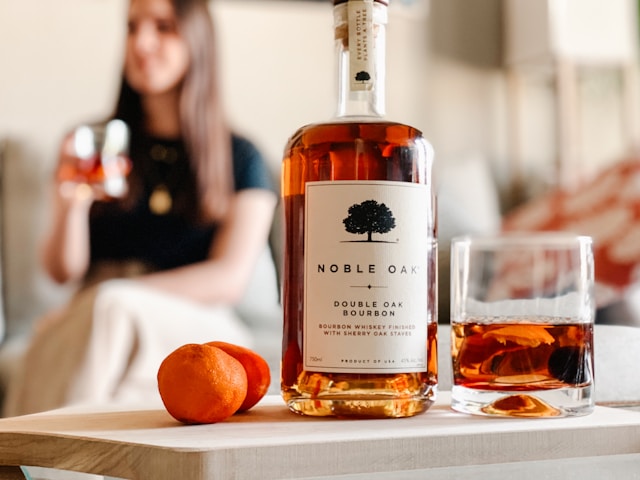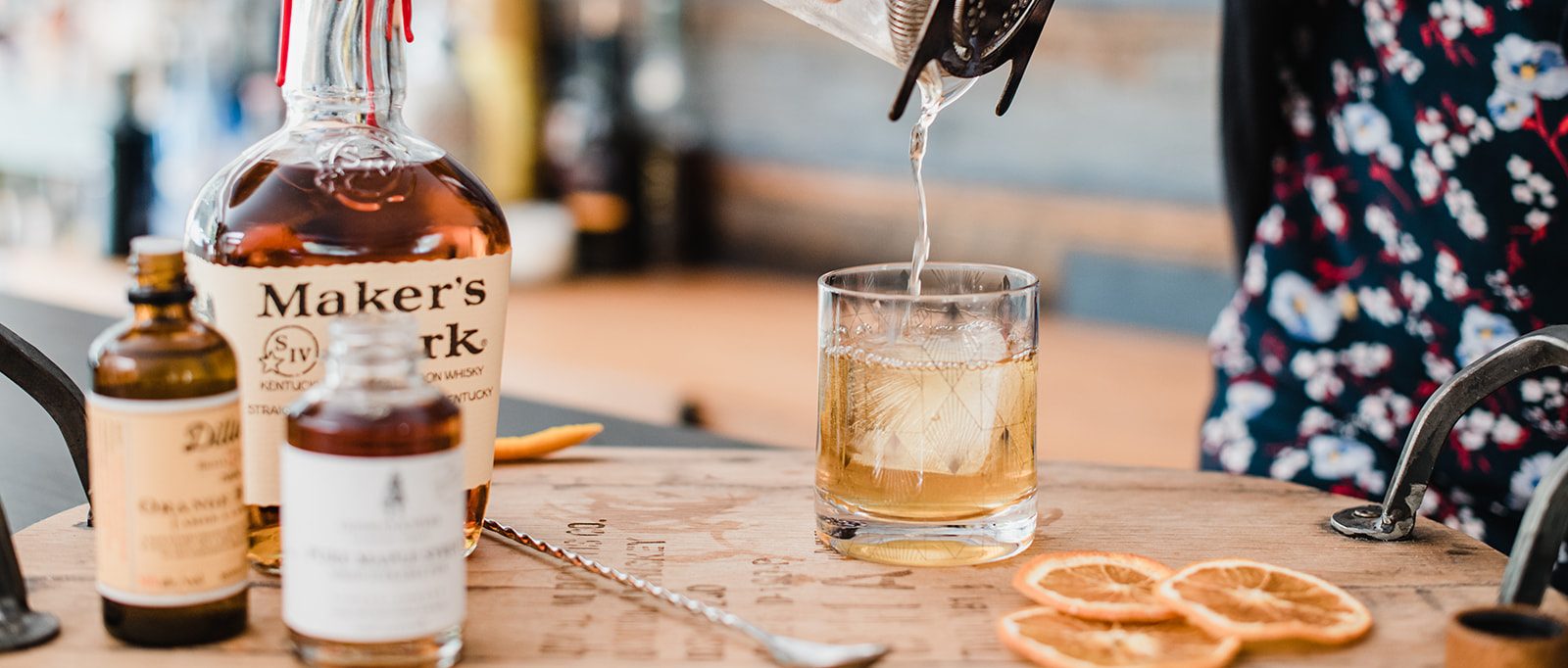Best Single Malt Scotch: A Lifetime List of Reliable Drams
If you’re looking to explore the esteemed world of single malt scotches, you’ve come to the right place. Each crafted with care at a single distillery, these expressions are (in my opinion) the pinnacle of Scottish tradition and flavour.
Over the years, I’ve had the pleasure of tasting each of these tremendous whiskies, which is why I’ve put together this round-up. Whilst there are many, man more I could’ve included, these are definitely my favourites and ones I’d recommend that you try.
Any of the bottles below are worth your bet, but based on my tasting notes below, I hope you can select at least one for your next investment.
Let’s dive in.
13 Best Single Malt Scotch Whiskies
#1 Macallan Sherry Oak 18 Years Old
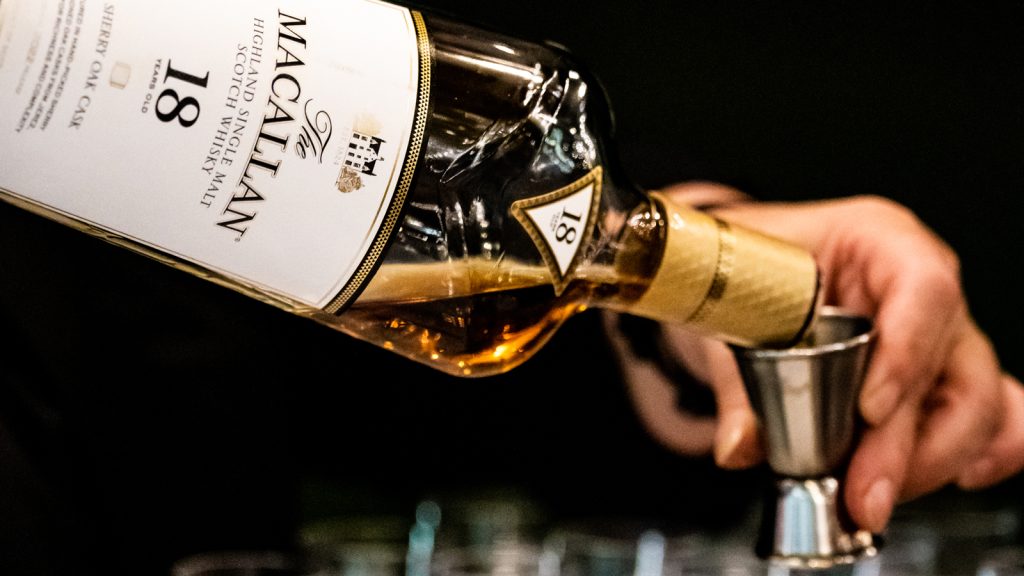
Top this list is the rather indulgent ‘bucket list’ 18 year old Sherry Oak from the revered Macallan distillery. This Speyside beauty is known for its deep colour and complex aroma. This exquisite scotch is matured in hand-picked sherry-seasoned oak casks from Jerez, Spain, imbuing it with dried fruits and spices.
On the nose, you’ll find dried fruits, ginger, chocolate, and citrus. The palate offers notes of raisins, cinnamon, and clove. The Macallan’s distillation process, with its small copper pot stills, ensures a rich and robust flavour.
The finish is long, warm, and resonant, leaving a lingering taste of sherry oak, spice, and sweet dried fruits. The Macallan’s dedication to traditional craftsmanship and unique sherry oak maturation make this 18-year-old single malt a celebrated Speyside jewel.
#2 Glenfiddich 21-Year-Old
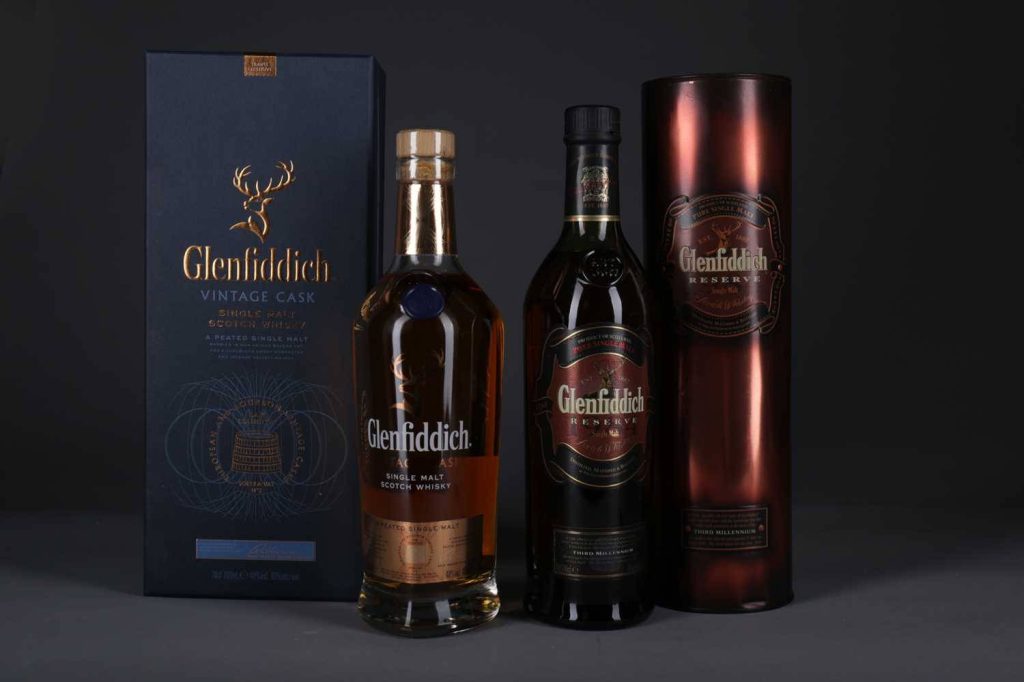
Definitely on the more expensive end of Glenfiddich’s roster is this outstanding 21-Year-Old. Initially matured in American oak casks, it then spends four months in barrels that once held Caribbean rum, adding an exotic twist.
The aroma is rich with toffee, figs, and ripe banana, complemented by toasty oak. The taste blends sweet toffee, figs, and a hint of smoky wood, leading to a spicy yet smooth finish with warm sweetness and a touch of the exotic.
The finish is a complex mix of sweetness, spice, and a touch of smoke, showcasing the innovative cask finish. Glenfiddich’s commitment to innovation and craftsmanship shines in this 21-year-old rum cask-finished scotch, making it perfect for those seeking something extraordinary.
#3 Laphroaig 10-Year-Old
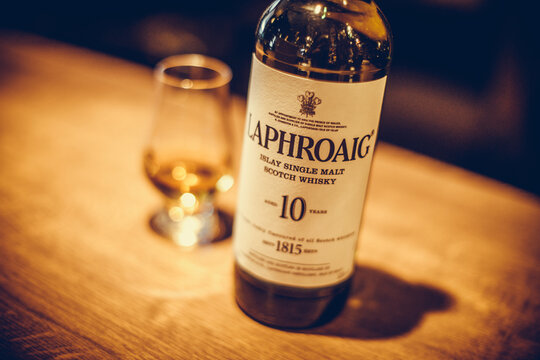
Laphroaig 10 Year Old is an iconic single malt from Islay, famous for its intensely peaty flavour. Aged for a decade, this bold and smoky scotch captures the essence of its rugged island home.
On the nose, you’ll find a wave of peat smoke, briny sea salt, and a hint of vanilla. The palate follows with rich peat smoke, peppery spice, and a touch of heather honey. Laphroaig’s unique distillation process, featuring smaller pot stills and longer fermentation, ensures a rich, full-bodied flavour.
The finish is long and unforgettable, leaving behind signature Islay peat smoke and a satisfying warmth that beckons you back for another dram. Laphroaig’s dedication to traditional methods, including using local peat to dry their malt, makes this 10-year-old single malt a true representation of Islay scotch whisky.
#4 Balvenie DoubleWood 12-Year-Old
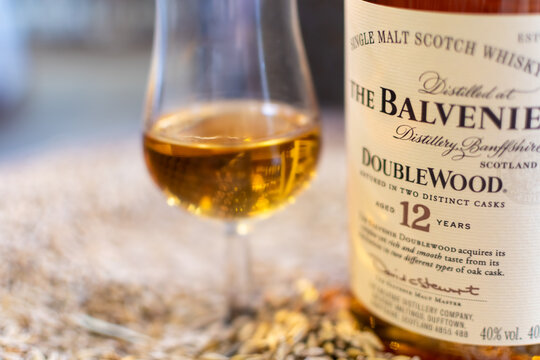
There’s a special place in my heart for Balvenie, especially after tasting it for this first time as a wedding favour many years ago. Whilst there are older, more luxurious expressions from this Speyside distillery, the DoubleWood 12-Year-Old is a reliable and great-value bottle you can enjoy for an accessible price.
This single malt undergoes a unique two-stage maturation process, first in American oak casks, then in European oak sherry casks for finishing. The result is a scotch with a sweet and mellow aroma of honeyed fruit, and hints of vanilla and oak. On the palate, the American oak adds sweet vanilla and rich fruit, while the European oak brings depth, nuttiness, and spice.
The finish is warm, smooth, and long, echoing the vanilla sweetness and complex spice that make the Balvenie DoubleWood 12-Year-Old a firm favourite of mine.
#5 Highland Park 18-Year-Old Viking Pride
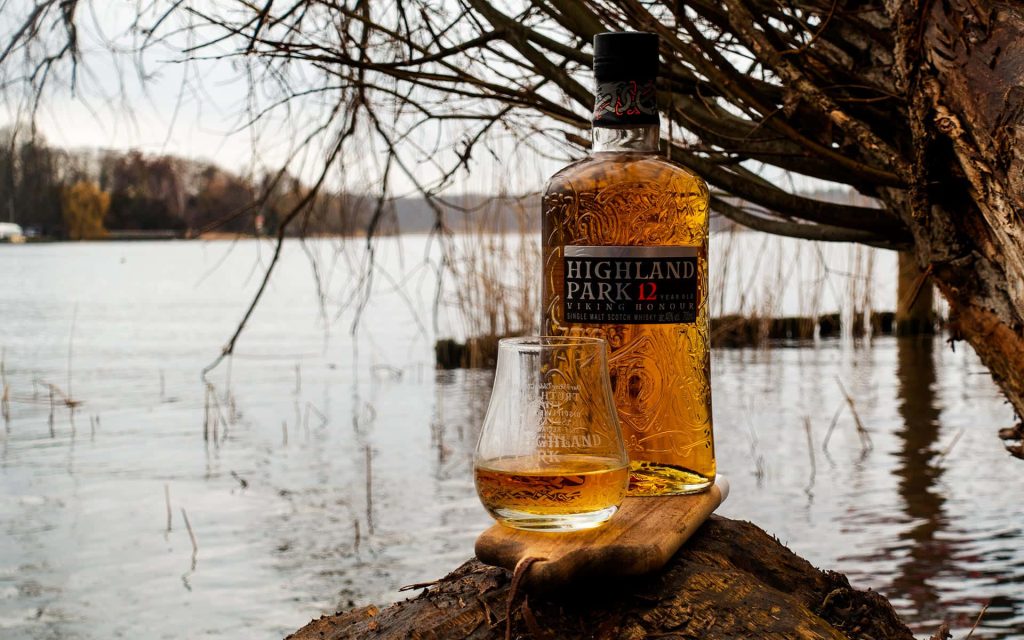
Despite this excellence of this whisky, I’ve always had a gripe with the naming of this distillery. Based on the Isle of Orkney, it’s literally nowhere near the Highlands… but I digress.
This 18 year old single malt gleams like autumn gold, and a whiff brings forth a symphony of aroma with distinctive peat smoke and whispers of burnt vanilla. Take a sip, and you’ll taste creamy vanilla and salted butter caressing your palate.
Highland Park prides itself on traditional distillation methods, with care in every step from malting to maturation. The local peat from Hobbister Moor provides a subtle, aromatic smokiness that’s beautifully integrated. The finish is long and lingering, much like the distillery’s history, leaving a warm, spicy embrace that invites contemplation.
#6 Glenmorangie 10-Year-Old
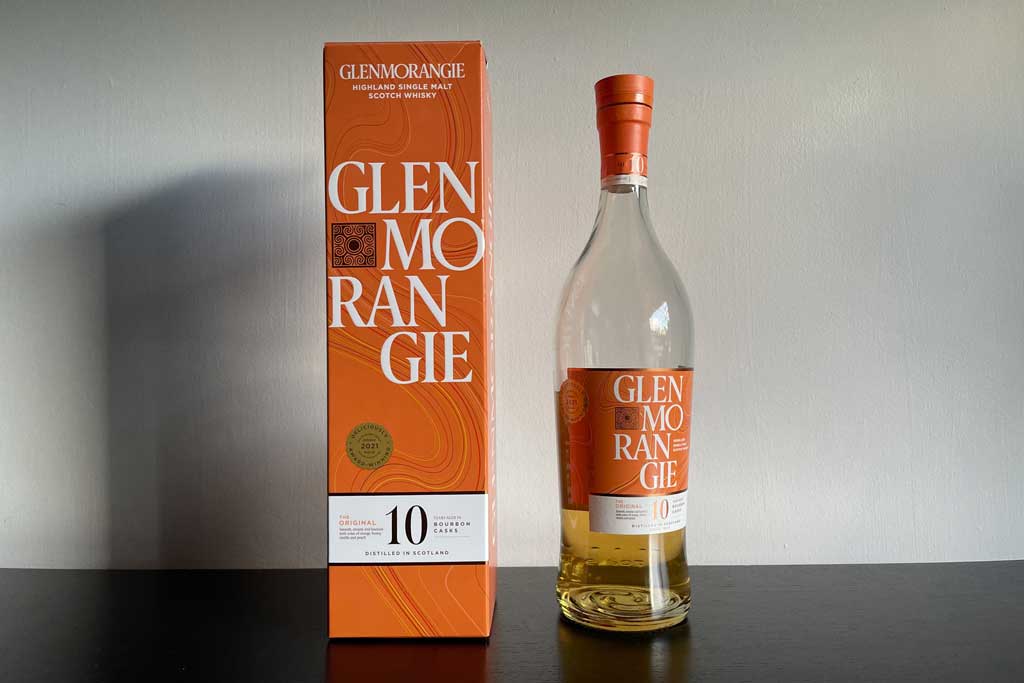
With the tallest stills in Scotland, the towering giraffe references and beautifully rebranded contemporary packaging of Glenmorangie are a refreshing upgrade on one of my favourite distilleries.
Never off my shelf for long, the Glenmorangie 10-Year-Old is a staple for single malt lovers. Its bright, pale lemon appearance sets the stage for a delicate and complex experience. The aroma is a vibrant mix of floral notes and citrus zest. On the palate, you’ll find dried fruits with a hint of honey sweetness.
Matured in ex-bourbon casks, this 10-year-old offers rich flavour and a golden hue, showcasing the distillery’s commitment to excellence. Whether enjoyed neat or with a splash of water, this whisky is approachable yet sophisticated. Definitely worth your investment.
#7 Aberlour 12-Year-Old
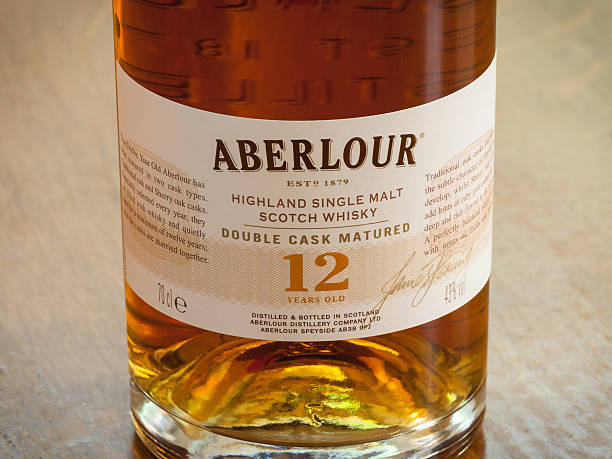
A somewhat overlooked single malt, I had the misfortune of visiting this distillery as a young boy on Scout trip, back before whisky was on the menu. I can still smell the malt now…
A regular tenant on my drinks table, The Aberlour 12-Year-Old is harmoniously rich in flavour. In your glass, it radiates with the warm amber of a setting sun. Bring it to your nose, and the aroma of ripe orchard fruit envelops you, mingled with spicy notes hinting at the complexity to come. A sip reveals a full-bodied richness, where fruity sweetness meets oak’s subtle spice.
The 12-Year-Old is double cask matured in ex-bourbon and sherry casks, creating a rich, layered whisky. The finish is long and satisfying, with a lingering sweetness reflecting the care in its creation.
#8 Talisker 10-Year-Old
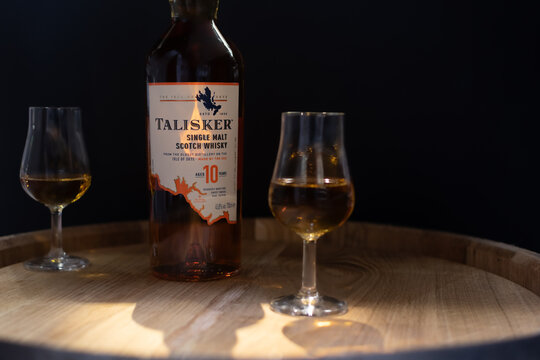
Possibly the best entry-level expression for the money, I’ve heard the fine folks at Talisker have described this whisky as ‘a bit too good for it’s own good’.
Pouring a dram of Talisker 10-Year-Old, you’re greeted with the deep, golden hue of a whisky aged for a decade. The nose hits with a powerful rush of the sea and a smoky peat undertow that’s unmistakably Talisker.
On the palate, there’s a robust character, starting peppery, then unfolding with sweetness and a smoky, malty dryness. The finish of the 10-Year-Old is long and warming, with a peppery aftertaste that’s invigorating and complex.
I can’t recollect another whisky that has the same character as Talisker, and for me, this is a firm favourite. Grab a bottle of the 10-Year-Old here.
#9 Ardberg 10-Year-Old
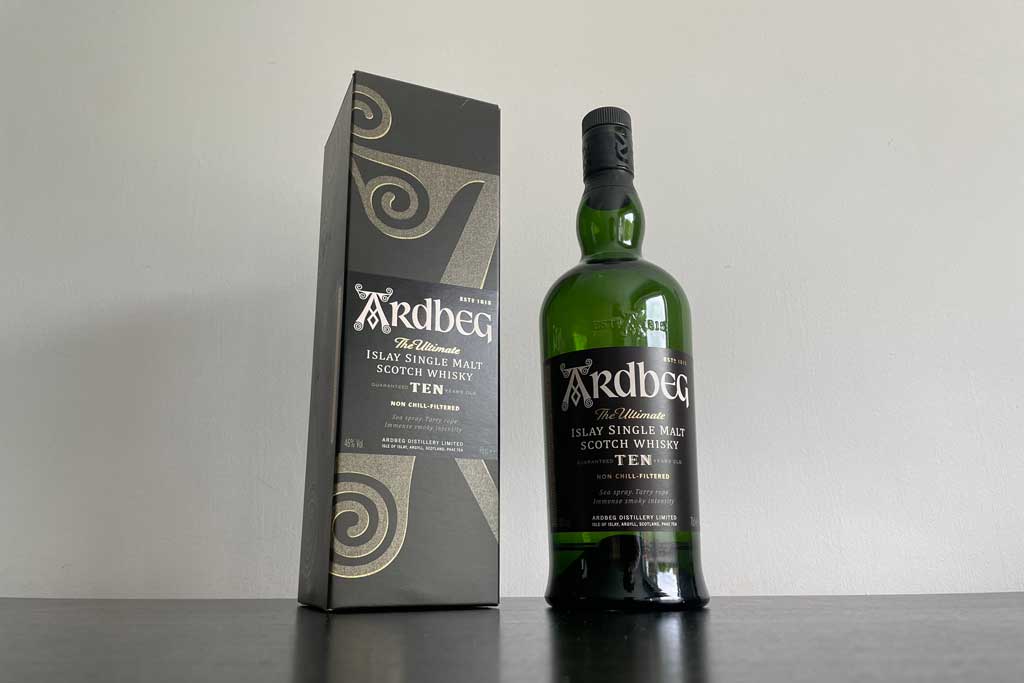
On the peaty, smoky side of the spectrum lies the Ardbeg 10 year old. Having drank this just last night (at the time of writing this post) recency bias will definitely play a role here.
Ardbeg 10-Year-Old greets you with a straw yellow colour, which often goes cloudy if you add cold water or ice. (Non chill filtered!) The aroma is a complex mixture of peat, smoke, and a touch of citrus, inviting you to dive deeper. On the palate, it bursts with rich smoky flavours, balanced by surprising sweetness and hints of sea salt and lemon.The finish is long and smoky, with a touch of brine and lingering notes of espresso and chocolate.
This 10-Year-Old is a bold choice, perfect if you appreciate a robust whisky with typically strong Islay smoke and peaty personality.
#10 Craigellachie 13-Year-Old
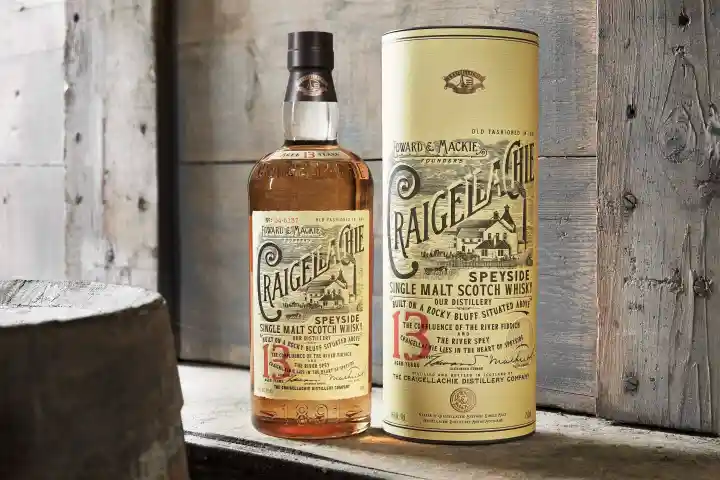
Another spectacular Speyside sip, the Craigellachie 13-Year-Old has a rich amber hue with an inviting aroma that captivates the senses. The nose greets you with notes of ripe fruits like apples and pears, complemented by hints of vanilla and toffee. A subtle hint of oak adds complexity.
On the palate, it offers a bold, full-bodied experience. The initial sip reveals a burst of fruity sweetness, followed by warm spices and a touch of nuttiness. Hints of cinnamon and ginger intermingle with delicate floral undertones, creating a harmonious balance of flavours.
The finish is long and satisfying, leaving a lingering warmth on the palate with echoes of dried fruits and oak. More a fruity floral dram, this is a delicate but delightful single malt.
#11 The Glenlivet 18-Year-Old

This list wouldn’t be complete without mentioning Glenlivet. Woven into the fabric of Scotch whisky itself, this distillery blows me away with pretty much all their bottles. Most recently? Their Founders Reserve bottle which is simply too good for the price. But let’s focus on the big brother 18 year old…
The Glenlivet 18-Year-Old has a deep golden hue, indicative of its tremendous maturity and complexity. The elegant aroma features floral notes mixed with ripe fruits like apples and pears. Subtle oak and vanilla add depth, promising a nuanced palate experience.
On the palate, The Glenlivet 18-Year-Old offers a smooth, velvety taste with honey and caramel. As it evolves, notes of dried fruits like figs and raisins appear, complemented by spices and a touch of dark chocolate. The finish is long and satisfying, with lingering oak and spice, leaving a warm, inviting sensation.
#12 Dalwhinnie 15-Year-Old
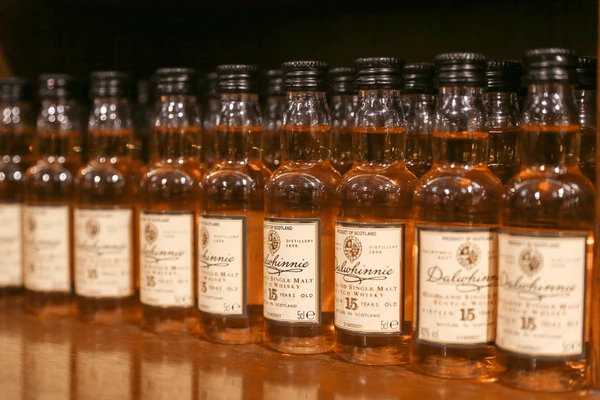
Just saying, but Dalwhinnie distillery has to have one of the prettiest names (and locations) on the Scotch market. They make a damn fine dram too.
Nestled amidst rugged terrain and heather-clad hills, this distillery is one of the highest in Scotland, with a pristine water source from nearby Lochan an Doire-Uaine. Their wonderful 15 year old expression showcases a pale gold colour reminiscent of the Highland landscape.
On the nose, Dalwhinnie 15-year-old offers a delicate aroma with notes of heather honey, vanilla, and hints of peat smoke, evoking the tranquillity of the Highlands. On the palate, it delivers a blend of flavours, starting with a gentle sweetness of honeycomb and malted barley, balanced by subtle spiciness and hints of orchard fruits like apples and pears.
A whisper of peat smoke adds depth and complexity. The finish is long and satisfying, with lingering notes of oak, heather, and a touch of smoke, leaving a lasting impression of the Highland wilderness.
#13 Aberfeldy 18-Year-Old Red Wine Cask Finish
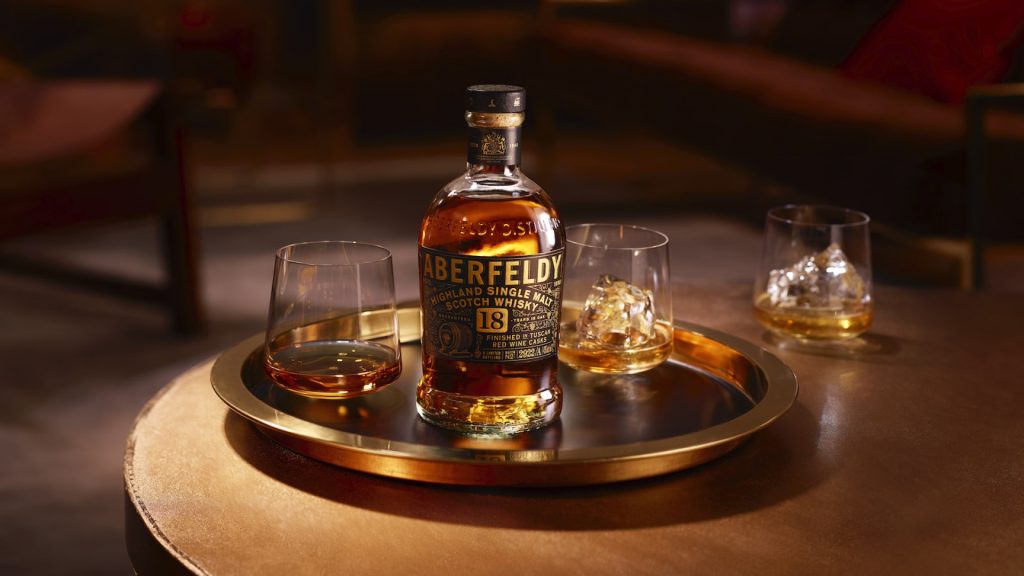
Making the backbone of Dewar’s blended Scotch, the Aberfeldy distillery are known for their lengthy fermentations at their Highland distillery. If you like fruity sweet whisky, their 18 year old single malt is a must-try.
Its famously rich golden colour hints at the 18 years maturing in oak casks. The aroma greets the nose with honeyed sweetness, citrus, and more oak. On the palate, Aberfeldy 18-Year-Old offers a luxurious experience, with flavours of toffee, dried fruits, and spices unfolding with each sip. The whisky’s velvety smoothness coats the tongue, leaving a lingering warmth.
Its finish is balanced, with a gentle fade that echoes the palate’s complexity, leaving a lasting impression of sophistication and refinement.
How to Enjoy Single Malt Scotch at Its Best
Enjoying single malt scotch is about more than just sipping a drink; it’s about savouring an experience. Unlike blended scotch, which combines various malt and grain whiskies, single malts offer a unique taste of their distillery. To truly appreciate their complexity, use the right glass—a tulip-shaped Glencairn concentrates the aromas and enhances your tasting.
Adding water is personal preference; a few drops can open up flavors, especially for cask-strength whiskies. The goal is to enjoy it your way. For food pairings, think complementary flavours like chocolate, cheese, or smoked salmon to enhance your dram. Take your time, explore, and let each sip tell its own tale.
The Importance of Proper Glassware
When you’re savouring a single malt scotch, the glass you choose can make a world of difference. A good glass will funnel the aromas right to your nose, enhancing the overall experience. I’d recommend a tulip-shaped glass, which allows you to appreciate the full range of scents. Ultimately is about retaining and then directing the whisky’s bouquet right to your senses, so you can detect every nuance.
While some folks might reach for any-old tumbler if you’re trying to get the most out of your dram, opt for something designed for the task.

To Add Water or Not?
Just a few drops of water can really ‘open up’ the flavours of your whisky, especially where alcoholic intensity might overshadow delicate undertones. By adding water, it gently lowers the alcohol strength, allowing more complex flavours to emerge.
Remember, it’s all about personal preference. If trying scotch for the first time, I recommend you taste it neat before adding any water. Start with a drop or two and notice how the flavour profile changes. Try to find the ‘sweet spot’ here, tasting as you go to find the best balance for your palate.

Pairing Food with Single Malt Scotch
If you’re a foodie like me, pairing food with single-malt scotch is an addictive art that can really elevate your tasting experience. The key here is balance; you want to complement the whisky’s flavour profile without clashing with it.
For example, a rich and savoury dish with a hint of sea salt can beautifully enhance the briny character of an Islay single malt scotch whisky. Think smoked salmon or a creamy blue cheese that can stand up to the whisky’s robust flavours.
For scotches aged in sherry and bourbon casks, you might look for food that echoes the sweet and nutty notes, like dark chocolate or a caramelized dessert. The trick is to match the intensity of the food with that of your scotch, creating a harmonious dining and drinking experience.
Remember, the best enjoyment comes not just from the pairing itself but from discovering what combinations work best for you.
I hope this helps!

FAQs
1. What’s the best glassware to enjoy single malt scotch?
The preferred choice is a tulip-shaped glass, which concentrates the whisky aromas and enhances the tasting experience. This shape allows you to take in all the notes from the scotch, including delicate undertones that might be missed in a wide-neck tumbler or rocks glass.
2. Should I add water to my single malt scotch?
This comes down to personal preference. A few drops can open up the flavours of the whisky, especially for higher-proof spirits. Try your scotch neat first, then add water incrementally to see how it changes the taste, and find what you enjoy most.
3. Can you recommend food pairings for single malt scotch?
Absolutely! Foods with a hint of sea salt can complement the briny notes of coastal scotches such as Talisker, while rich desserts match well with scotches aged in sherry and bourbon casks. The aim is to balance the flavours without overpowering the whisky.
4. Is there a difference in flavour between scotches aged in oloroso sherry casks versus ex-bourbon barrels?
Yes, there is a distinct difference. Scotches aged in oloroso sherry casks often have rich, sweet, and nutty flavours, while those aged in ex-bourbon barrels can exhibit vanilla, tropical fruits, and sometimes spice notes.
Conclusion
As I mentioned, these are just some of the whiskies that I deem to be the best single malt Scotch on the market. Admittedly, a few of these are top shelf expressions, but most of them are relatively affordable and easily accessed. While the price is an important factor, it’s not the only indicator of quality. The best way to find your favourite single malt scotch is to try different ones and discover which flavour profile appeals most to you.
Hopefully you found this article helpful.



